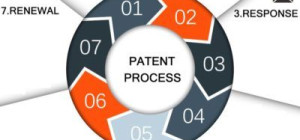In today’s digitally connected age, you are likely dealing with an overwhelming amount of data. Whether you’re a business owner, a data analyst, or an IT professional, managing, protecting, and understanding this data is a significant responsibility. This becomes even more critical when you consider regulatory compliance. But what is sensitive data discovery, and how does it relate to regulatory compliance?
Data discovery is a term used to describe the process of finding and understanding data. It involves techniques and methodologies for identifying patterns, relationships, and anomalies within datasets, allowing for more informed decision-making. For regulatory compliance, data discovery is crucial. It helps you identify the data that falls under various regulations, ensuring that you handle such data appropriately to avoid non-compliance penalties.
However, the importance of data discovery for regulatory compliance goes beyond avoiding penalties. It helps you build stronger data governance frameworks, enhance risk management strategies, and improve overall business performance. By understanding your data better, you can make more informed business decisions.
Data Regulations are Growing More Complex
You might have noticed that data regulations are becoming increasingly complex. With the proliferation of data in today’s world, governments and regulatory bodies are instituting more stringent laws and regulations to protect consumers’ data and privacy. From the General Data Protection Regulation (GDPR) in the European Union to the California Consumer Privacy Act (CCPA) in the United States, the landscape of data regulations is broad and varied.
These regulations not only set the rules on how businesses should handle and protect consumers’ data but also carry significant penalties for non-compliance. As such, understanding and adhering to these regulations is vital for modern business operations. But how do you navigate this complicated regulatory landscape?
That’s where data discovery comes in. By using data discovery tools and techniques, you can identify and classify the data in your possession. This process enables you to understand which regulations apply to the data you handle, thereby facilitating compliance.
Data Visibility is Essential for Compliance
Many of the data regulations today mandate the protection or management of specific data types. For instance, the GDPR requires businesses to protect the personal data of EU citizens. At the same time, the Health Insurance Portability and Accountability Act (HIPAA) in the U.S. stipulates the protection of health information.
For you to protect or manage this data as required by law, you first need to know that it exists. This is where the concept of data visibility comes into play. Data visibility refers to your ability to see and understand your organization’s data. Without it, complying with data regulations can be like finding a needle in a haystack.
Knowing that data exists is just the first step. You also need to understand what that data is, where it’s stored, who has access to it, and how it’s being used. Having an in-depth understanding serves as the foundation for efficient data management, allowing organizations to classify, safeguard, and use their data optimally. This knowledge is also critical for proper compliance with data regulations.
Data discovery plays a central role in achieving data visibility. It helps you unearth the data buried in your systems, classify it, and map its journey across your organization. With this visibility, you can effectively manage your data, ensuring that it’s adequately protected and handled in line with the applicable regulations. Furthermore, it aids in creating a complete data catalog to help as a reference guide for all data-related queries while maintaining information consistency and accuracy.
Finding the Data that You Need to Protect
So, how do you find the data that you need to protect? Here are some tips to guide you on your data discovery journey.
- Understand Regulatory Guidelines: Grasping the regulatory parameters relevant to your business is crucial. This understanding can aid you in recognizing the data categories which require protection.
- Adopt Data Discovery Tools: Commit to a resilient data discovery platform that harnesses the power of AI and machine learning. These advanced technologies enable thorough scanning, precise identification, and accurate classification of your data, ensuring nothing is overlooked or left to chance.
- Promote a Data Compliance Culture: Encourage a culture to promote data compliance throughout your organization. Through regular training and awareness initiatives, different departments and teams can appreciate the significance of data protection and regulatory compliance.
- Schedule Periodic Reviews and Updates: Make it a norm to scrutinize and revise your data discovery methods routinely. As the data changes with your evolving business, these reviews ensure your data discovery practices remain pertinent and efficient.
- Implement Data Mapping: Implementing data mapping enables organizations to catalog and understand their data flows, pinpoint sensitive data, and gain a comprehensive view of their data landscape. This helps identify vulnerabilities and compliance gaps, allowing for informed decision-making and strategic data management.
- Collaborate with Stakeholders: Engage with key stakeholders like IT professionals, data scientists, legal experts, and business teams during the data discovery process. Their collective knowledge fosters a more comprehensive approach to data discovery and safeguards.
- Embrace Privacy by Design: Infuse privacy principles into your data discovery process, adhering to the Privacy by Design framework. This proactive strategy integrates data protection intrinsically into your data journey, equipping you for potential data breaches or issues.
In conclusion, data discovery plays a pivotal role in enhancing regulatory compliance. By providing visibility into your data, it enables you to identify, classify, and manage your data in line with the various data regulations applicable to your business.
However, data discovery is not a one-time activity. It’s a continuous process that needs to be integrated into your regular business operations. Frequent data discovery ensures that you stay on top of your data, allowing for timely compliance with evolving data regulations.
Remember, regulatory compliance is not just about avoiding penalties. It’s about responsible data management, building customer trust, and, ultimately, driving business success. So, invest in robust data discovery practices, and turn regulatory compliance from a daunting task into a strategic business advantage.







